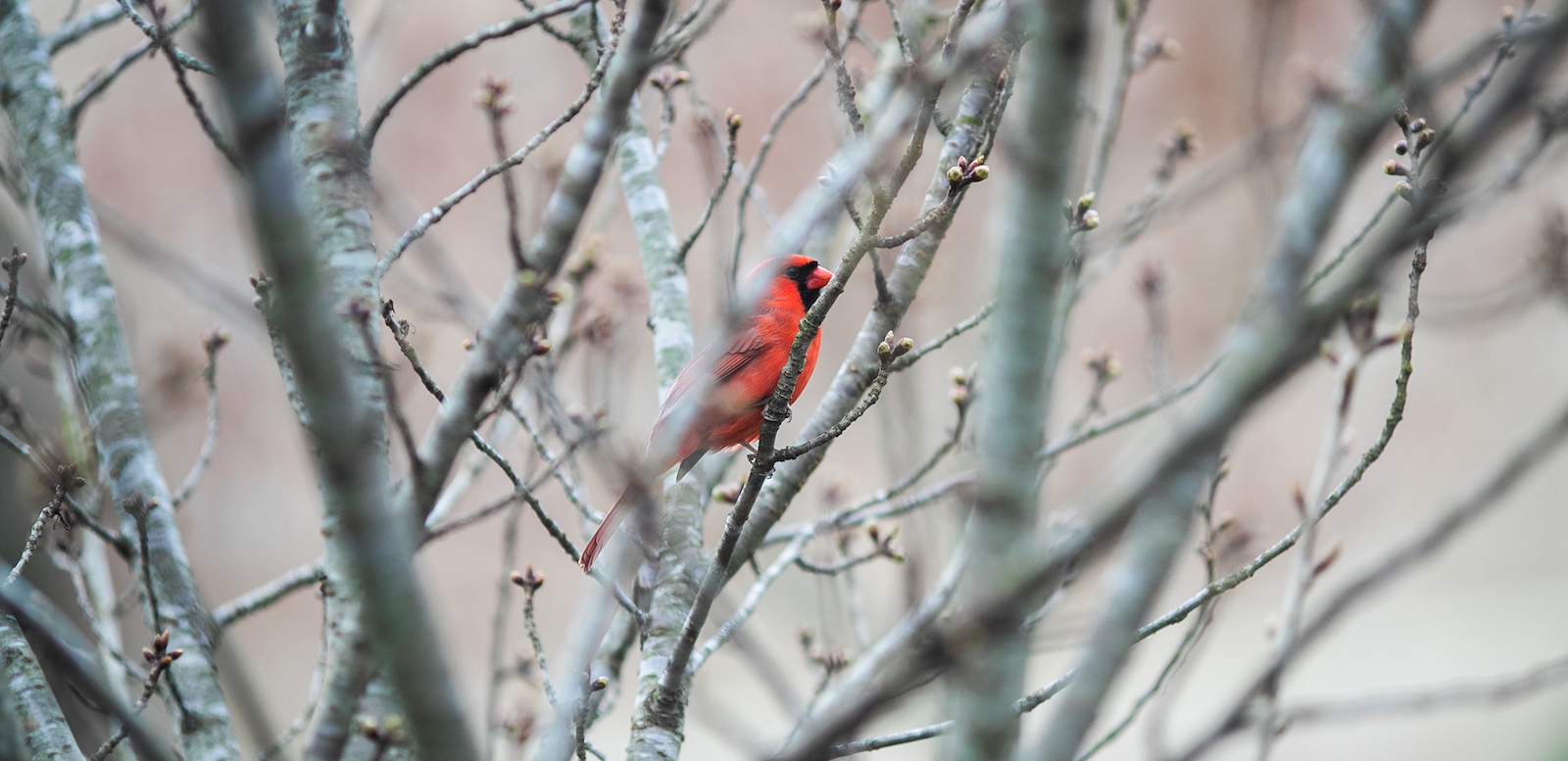Austin Peay adds second corpse flower plant, could bloom in 2-3 years

(Posted Sept. 10, 2020)
Austin Peay State University’s greenhouse has been the host to a special guest for two years and now that guest has a friend.
Dr. Carol Baskauf, plant ecologist and biology professor, is now the proud owner of two titan arum plants, known by their apt nickname, “corpse flower.”
The Department of Biology received its first corpse flower in the summer of 2018 from Vanderbilt University greenhouse manager Jonathan Ertelt. What started as just a shard, known as a corm, sticking a few inches from the dirt is now a tree-like “leaf” that can grow anywhere from 8-15 feet tall.
The real 15 minutes of fame for the corpse flower occurs every 7-10 years. A large spathe unfurls to reveal a stinky spadix erected from the center of the flower. Think of the teacup-like appearance of a tulip but on a much larger scale: as big as 10 feet making it the largest unbranched inflorescence. A fancy word for flowers not connected to a branch.
“The flower is remarkable looking and produces a stinky smell like rotting meat and carrion to attract its pollinators: carrion beetles and flesh flies,” Baskauf said. “The odor tricks them into thinking it is a dead animal carcass.”
Story continues below video
Corpse flower could bloom in two or three years
The corpse flower must choose between producing a leaf (it can spend anywhere from 12-18 months in this state) or the rare flower that lasts only 24-36 hours. That means it doesn’t have long to attract pollinators. To increase the reach of its smell, it uses energy to heat itself to more than 90 degrees Fahrenheit.
“The smell is produced once it is already blooming,” Baskauf said. “The structure of the growing sprout will eventually reveal if it is going to be a leaf or a flower.”
Baskauf is not sure when the flowers will bloom. There is no way to tell for sure, but she estimates that in another three or four years, the original corm will bloom, and the second should bloom in two or three years.
The titan arum is a long way from home. Found natively in the forests of Sumatra, an island in the western part of Indonesia, it needs another pollinator of the same species. Of course, it’s rare for these plants to bloom at the same time, and APSU’s greenhouse can’t introduce carrion beetles and flesh flies into its environment, leaving only one option for pollination.
“It might be possible to get pollinate by hand,” Baskauf said. “I’m in touch with Ertelt and an expert at the Chicago Botanical Garden who is in charge of various titan arums there to get advice on pollinating our plants when they bloom. It also might be possible to collect and freeze pollen from our plants until we can share it with another institution with a titan arum.”
Even the leaf is impressive

Although the plant requires specific conditions to survive, Bryan Gaither, lab manager for Austin Peay’s Department of Physics, Engineering and Astronomy, has created a box to transplant the titan arum for wider viewing. According to Baskauf, it becomes difficult to transplant once the tuber begins to grow.
“The time to transplant the titan arum is after it has gone dormant for a while, which is after the tall leaf has died back and only the large tuber is left,” she said. “The COVID-19 closures made it hard to coordinate with Bryan. The planter box wasn’t ready to go when I transplanted the tuber into a new pot, and the tuber started to grow really fast. Now the leaf has grown so tall it looks like a small tree, so it would be very difficult to transplant it safely.”
Baskauf said there’s a tradition of naming titan arum plants, but the department has yet to come up with one. “That seems to be a tradition at various other institutions,” she said. “We might do so too someday.”
Baskauf wants to set up a webcam for students to witness the transformation.
“The sprout grows so quickly, it’s very impressive even when it’s ‘just’ a leaf,” she said. “Of course, whenever it produces a flower, that would be great for the public to be able to watch on a web cam.”
Of course, we’d be missing out on that wonderful smell.
To learn more
- For more about the Austin Peay Department of Biology, visit https://www.apsu.edu/biology/.
- Here’s an interesting article to help you learn about the titan arum lifecycle: https://www.museums.cam.ac.uk/blog/2017/10/05/an-interview-with-titus/.
- The U.S. Botanic Garden had three corpse flowers bloom in 2017. Read more here: https://www.usbg.gov/three-corpse-flowers-bloomed-usbg-2017.
News Feed
View All News
Two hours after his interview with the Clarksville Police Department (CPD), Army veteran Dustin Zook had a job offer in hand--a swift result powered by the preparation he built through Austin Peay State University's Military-Affiliated Professionals Program (MAPP).
Read More
Graduating seniors from Austin Peay State University's Eriksson College of Education achieved the program's highest edTPA passing rate and scores since the university adopted the assessment in 2013, positioning these newly licensed teachers to succeed in Tennessee's classrooms.
Read More
Austin Peay State University Middle College students are leading campus-wide bird strike research through the Bird Alliance, documenting window collisions and contributing to ongoing conservation efforts that have significantly reduced bird deaths on campus.
Read More